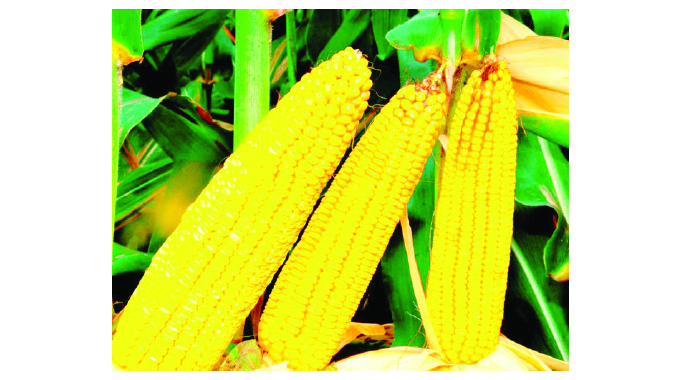
Mthabisi Tshuma, Features Correspondent
THE country’s 2020/2021 farming season was characterised by above-normal rainfall experienced countrywide.
As climate change and agriculture are interrelated processes, the country is this year expecting a bumper harvest of crops.
Notwithstanding the efforts to improve the adoption of food fortification in Zimbabwe especially in rural areas, they continue to be generally low, with malnutrition inevitable.
In June 2017, the Government made it mandatory for major local food manufacturers to fortify processed staple foods with micro-nutrients.
The food vehicles targeted for fortification included sugar (vitamin A), cooking oil (vitamin A and D), maize meal and wheat flour (A, B1, B2, B3, B6, B12, folic acid, iron and zinc).
In addition to mandatory fortification, the Government is promoting three biofortified food crops which are, biofortified orange maize (Vitamin A), Nua 45 beans (Zinc and Iron), and protein maize.
Considering the expected bumper harvest, a challenge may be presented in the fortification process of the country’s foods as most communal farmers have said the state of the economy is causing reluctance in selling their yield to the Grain Marketing Board (GMB).
Last year, the Second Round Crop and Livestock Assessment report by the Ministry of Agriculture reported that communal farmers had accounted for approximately 66 percent of Zimbabwe’s maize production for the past 20 years, as most large-scale farmers have resorted to cash crops.
The grain marketing season opened on April 1 at nearly 1 400 buying points that have been set up countrywide, while an additional 400 are being established as the season progresses.
All 84 GMB depots have begun operating daily, including on weekends, to facilitate uninterrupted grain deliveries, with supplies expected to start picking up next month.
The grain utility is paying $32 000 for a tonne of maize, $48 000 for a tonne of soya beans and $38 000 for traditional grains, according to a new producer price schedule published last month.
Government has set aside $60 billion to ensure timely payment of farmers, with the GMB undertaking to effect payments to farmers within 72 hours of delivery.
Farmers who deliver their grain to mobile collection points will be paid within five days.
Zimbabwe expects to produce between 2,5 and 2,8 million tonnes of maize and 360 000 tonnes of traditional grains, in what is being touted as the largest yield achieved by the country since the Land Reform Programme commenced in 2000.
Last year, grain intake 2020/21 producer price from April 1, 2020 were pegged at; maize $12 329.72 per tonne, traditional grains (sorghum, millet and rapoko) $12 865.79 per tonne and soya beans $17 211.74 per tonne.
Villagers in Mlambapele Village in Gwanda District, Matabeleland South Province have however expressed dismay at the low buying costs of their crops and delay of payments.
To them, the food fortification process is news as there has been no availing of such information which is causing hidden hunger in some communities.
Ward 19 councillor Tompson Makhalima said villagers are in the dark with regards to the process of food fortification.
“This is a word I have just come across and I have heard a few talk about the whole process. The challenge in this area is that there are no awareness campaigns being made to ensure villagers know about this issue.
“The poor telephone network has further affected the whole process together with the banning of gatherings, as rural people, we have not tapped into the growth of technology,” said Clr Makhalima.
He said that he would table a motion at the next rural district full council meeting as he would want villagers to benefit immensely from the programme.
A villager, identified as Mrs Retumedzi Nare, said they cannot risk selling their bumper harvest to the GMB for a low value in the name of fulfilling the food fortification process.
“As a villager, I must travel to Gwanda to sell my maize. I pay for transport costs and also wait to receive producer money after some days. This is a real setback for some of us as we do not stay in town.
“As for the food fortification process we do not know anything about it but we try by all means to ensure that we eat a balanced diet as families,” said Mrs Nare.
Health and Wellness Consultant Dr Tinaye Muzamhindo noted that malnutrition is expected to be on the rise considering the consumption of non-fortified foods.
He said people need to be educated on the impact of fortified foods and non-fortified foods.
“Malnutrition may occur when consuming non-fortified food. Both those who consume fortified foods and those who consume non-fortified foods need health and wellness awareness, education, and promotion of nutrition.
“Those who have maize harvest in excess should batter trade for other nutritious foods like beans and vice versa. People should also avoid consuming too much salt and too much cooking oil,” said Dr Muzamhindo.
Dr Muzamhindo added, “Groundnuts and peanuts are good sources of proteins. Bush vegetables are a great source of vitamins and minerals while small grains are way better than maize.” — @mthabisi_mthire
